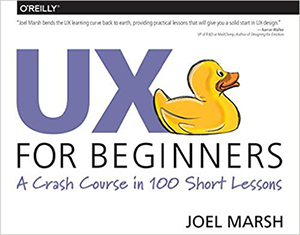Once someone has been working in a field for some years, what can be challenging is losing the ability to experience and explain that field through the eyes of a novice. In a previous column, I wrote about finding it challenging to appreciate a design as a user rather than as a designer when looking for ways to improve it. This is a similar situation, and it’s why having a solid rationale for any design decision and opening a design up to users’ challenges are such key parts of the process.
Online Training Materials
A little while ago, I presented an introduction to User Experience to some of my colleagues, as part of a broader set of activities to help increase their understanding about how the UX design process works and the kind of thinking that underpins design. As part of trying to get back into a beginner’s mindset, I took a look at various online resources. The growing popularity of User Experience has meant that there are a lot of sources of information available online for learning about this field. The downside is that many of them—in my view—lack credibility. Many sites push sound bytes or myths—claims relating to the fold or the number of clicks being the most prominent—rather than useful content. Others confuse effective UX design with graphic design.
In my search for useful information about User Experience, one of the best online sources of training materials I came across was Joel Marsh’s UX Crash Course: 31 Fundamentals. I ended up drawing on a lot of the material from that course in preparing my own internal training course. The book UX for Beginners is the dead-tree format of that course.
 Every so often, I’m asked if I can recommend a book on learning User Experience, and I generally struggle to find an appropriate answer. It’s not that there aren’t any good books out there. It’s more that learning User Experience—as with most things—is something better done through practice, working on something that is as close to a real problem as possible. (Sure, no one wants to mess up on a big corporate project in the name of personal development. But frankly, if you’re the person trying to make things better, and you can persuade people to let you do it, all power to you.)
Every so often, I’m asked if I can recommend a book on learning User Experience, and I generally struggle to find an appropriate answer. It’s not that there aren’t any good books out there. It’s more that learning User Experience—as with most things—is something better done through practice, working on something that is as close to a real problem as possible. (Sure, no one wants to mess up on a big corporate project in the name of personal development. But frankly, if you’re the person trying to make things better, and you can persuade people to let you do it, all power to you.)